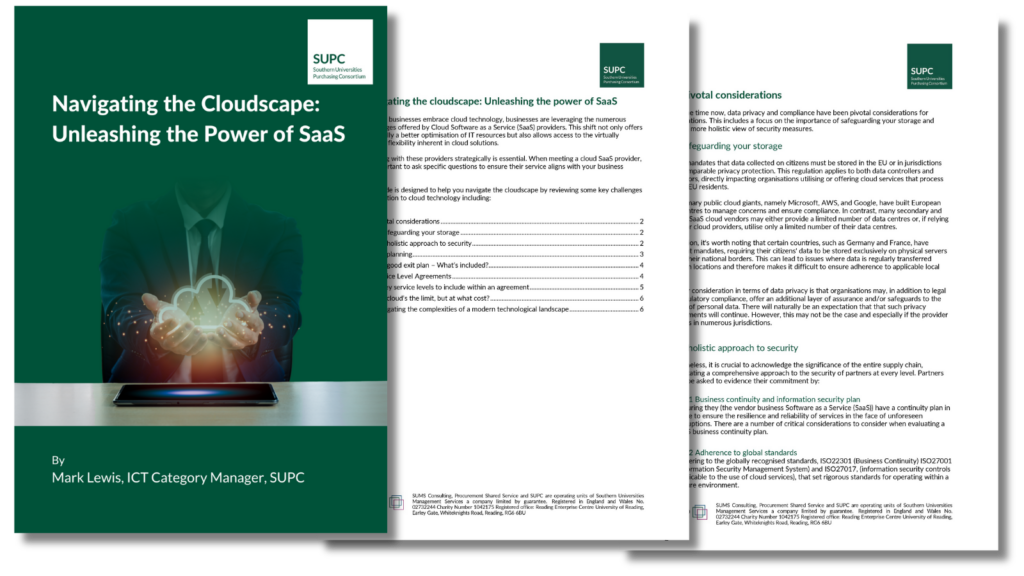| Date |
|---|
| 28th February 2024 |
Successfully adopting Cloud Software as a Service (SaaS) presents significant opportunities for businesses to optimise IT resources and access the flexibility offered by cloud solutions. Strategic engagement with SaaS providers is essential, and you must carefully consider all factors, including , cost and functionality.
This guide, prepared by SUPC Category Manager Mark Lewis, is designed to help you navigate the cloudscape by reviewing key challenges of migration to cloud technology.

Key considerations include:
- privacy compliance
- business continuity
- planning
- exit strategies
- clear service level agreements (SLAs)
Privacy concerns, particularly regarding data privacy and compliance such as GDPR, are paramount. Vigilance is required, especially with secondary SaaS vendors, to ensure you are adhering to data residency mandates.
Creating an exit plan for SaaS arrangements is pivotal. This should include defined roles, data migration strategies, cost identification, secure data deletion, and support for transitioning to a new supplier.
Other aspects which are foundational for successful SaaS partnerships are clear SLAs. These should cover various aspects like uptime, response times, data security, and service termination processes.
The evolving landscape of data privacy underscores the importance of adhering to regulations and adopting a comprehensive security approach throughout the supply chain. Business continuity planning, robust risk management, and meticulous exit planning contribute to a holistic security framework. Additionally, direct customer feedback enriches decision-making and strategic foresight in navigating the technological landscape.
